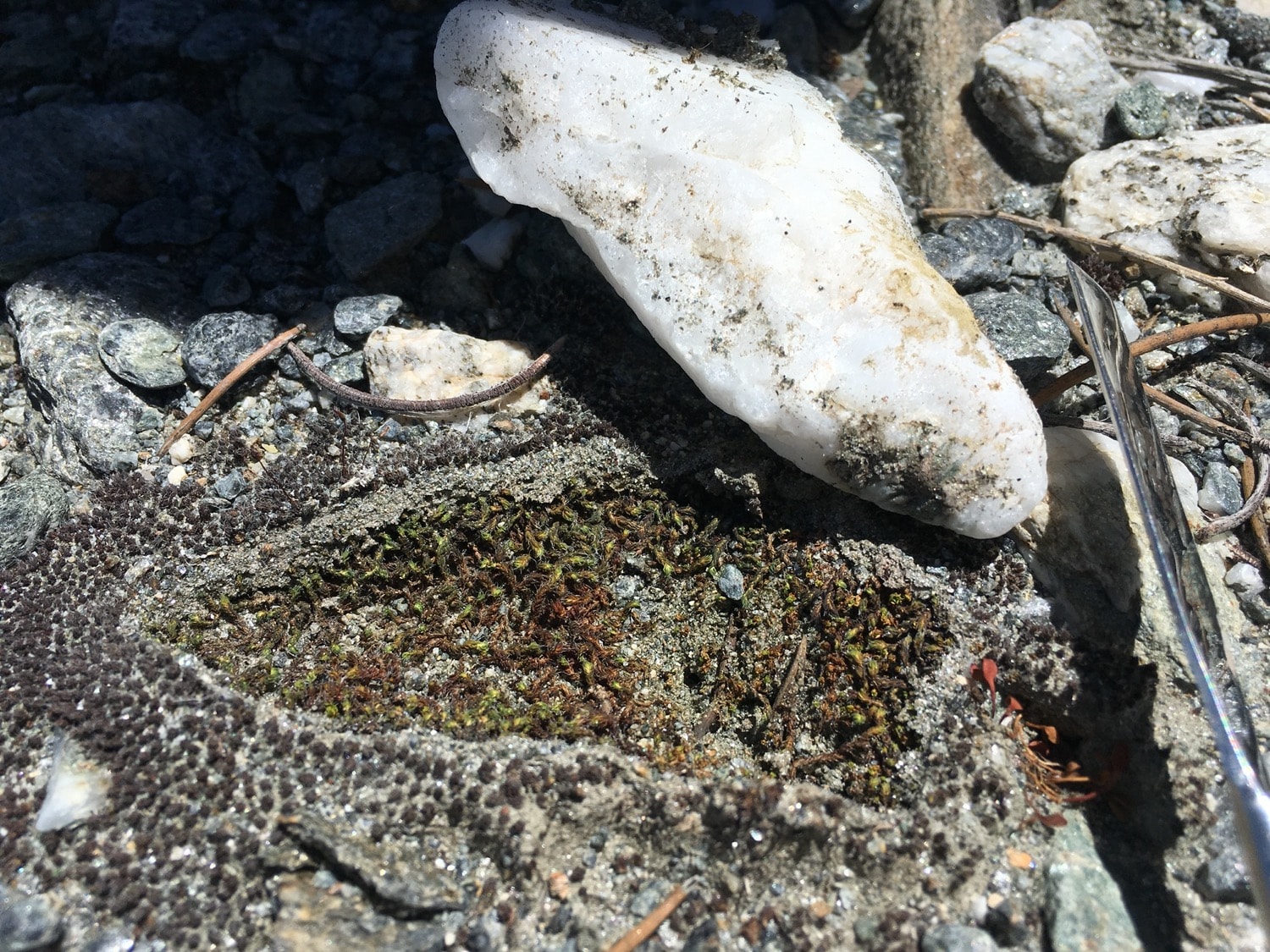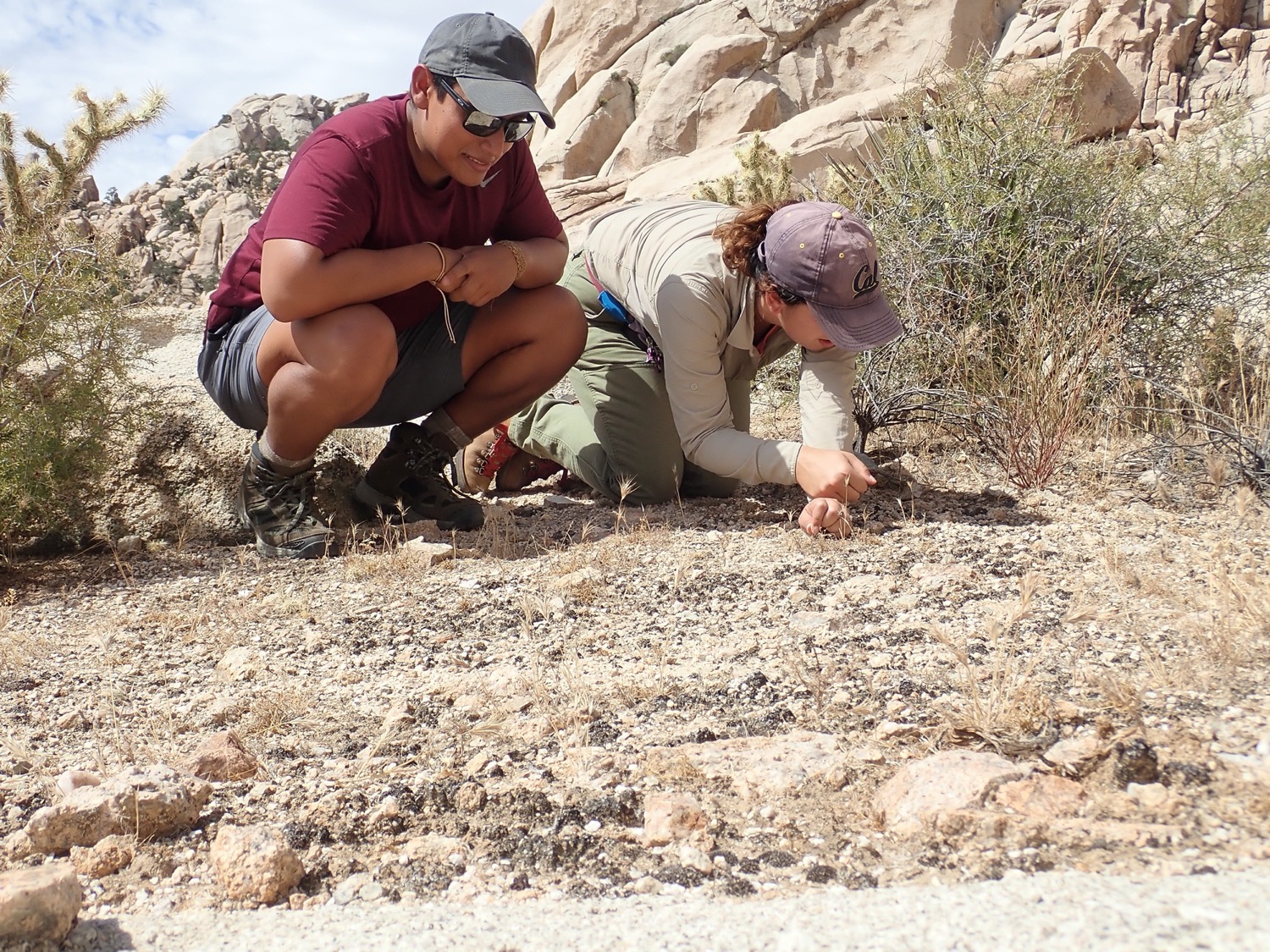These Moss Are Living Their Best Life—Under Rocks
16:56 minutes

Desert mosses live a much different life than their cousins in lush, water-rich forests. In fact, they spend most of their time dormant: dried out, waiting for the rare rainfall to bring them to life so they can grow and reproduce. Once exposed to water, though, these same mosses can re-animate quickly—within minutes they’re back to photosynthesizing.
And in research published in PLoS One this summer, scientists working in the Mojave Desert discovered another bryophyta trick. They found some moss species were using rocks as sun shades, preventing them from drying out as quickly. But not just any rock will do—with the help of semi-translucent quartz, moss are still able to receive small amounts of sunlight, thriving in small shady oases for weeks past the most recent rainfall.
Science Friday producer Christie Taylor talks to Jenna Ekwealor, a co-author on the research and PhD candidate at the University of California-Berkeley.
Desert biologists Kirsten Fisher, Brent Mishler, and Llo Stark comment excitedly on finding living moss underneath a quartz rock. Credit: Jenna Ekwealor
Above is a sample of Syntrichia caninervis moss being rehydrated. They begin completely desiccated—no metabolic activity whatsoever. They are not alive, but not technically dead. When exposed to a spray of water, they “wake up” from desiccated quiescence in real-time (this video was not sped up). “The ability to survive being completely dry, then rehydrate and resume normal function is known as “desiccation tolerance” and this species is basically the star of desiccation tolerance,” says biologist Jenna Ekwealor. “It can get really dry for really long periods of time (decades, even), and then rehydrate and begin photosynthesizing really, really fast. This is necessary because where they live in deserts, they may get water only a few times a year and they might dry out really soon again after a rainfall.”

Invest in quality science journalism by making a donation to Science Friday.
Jenna Ekwealor is a PhD candidate in Biology at the University of California-Berkeley in Berkeley, California.
Christie Taylor was a producer for Science Friday. Her days involved diligent research, too many phone calls for an introvert, and asking scientists if they have any audio of that narwhal heartbeat.